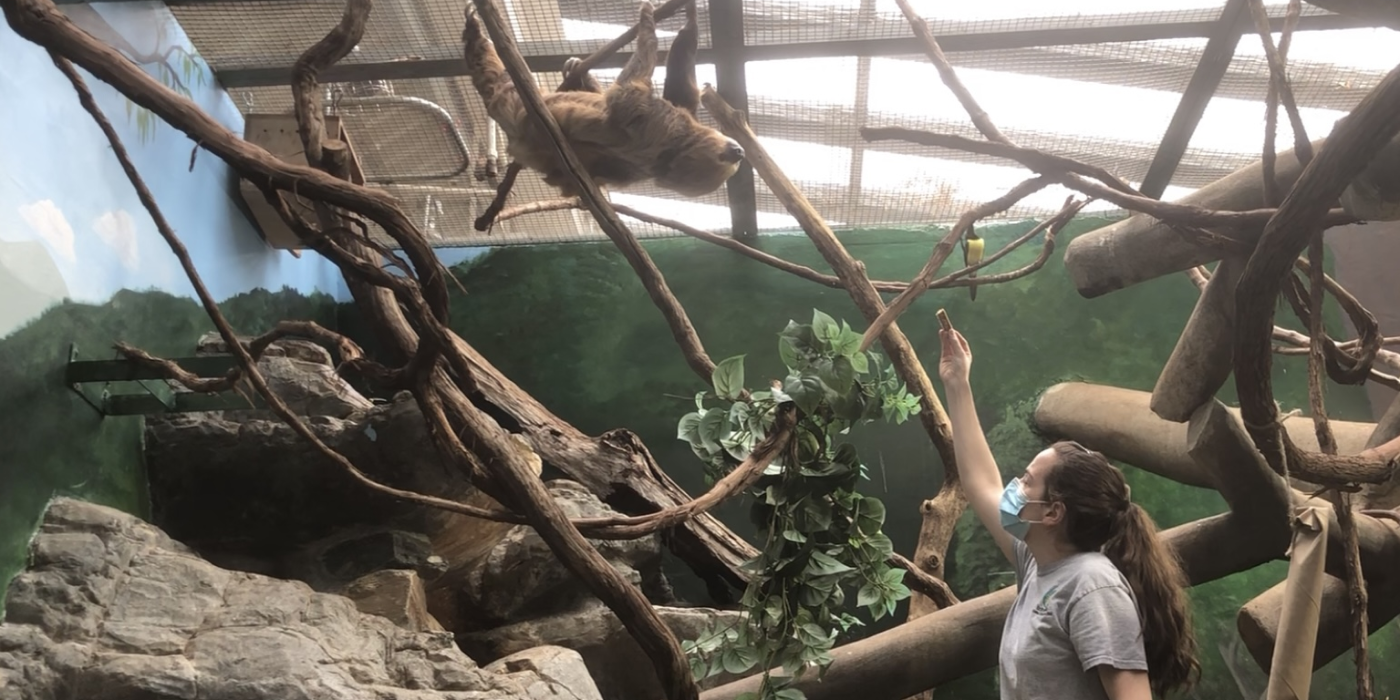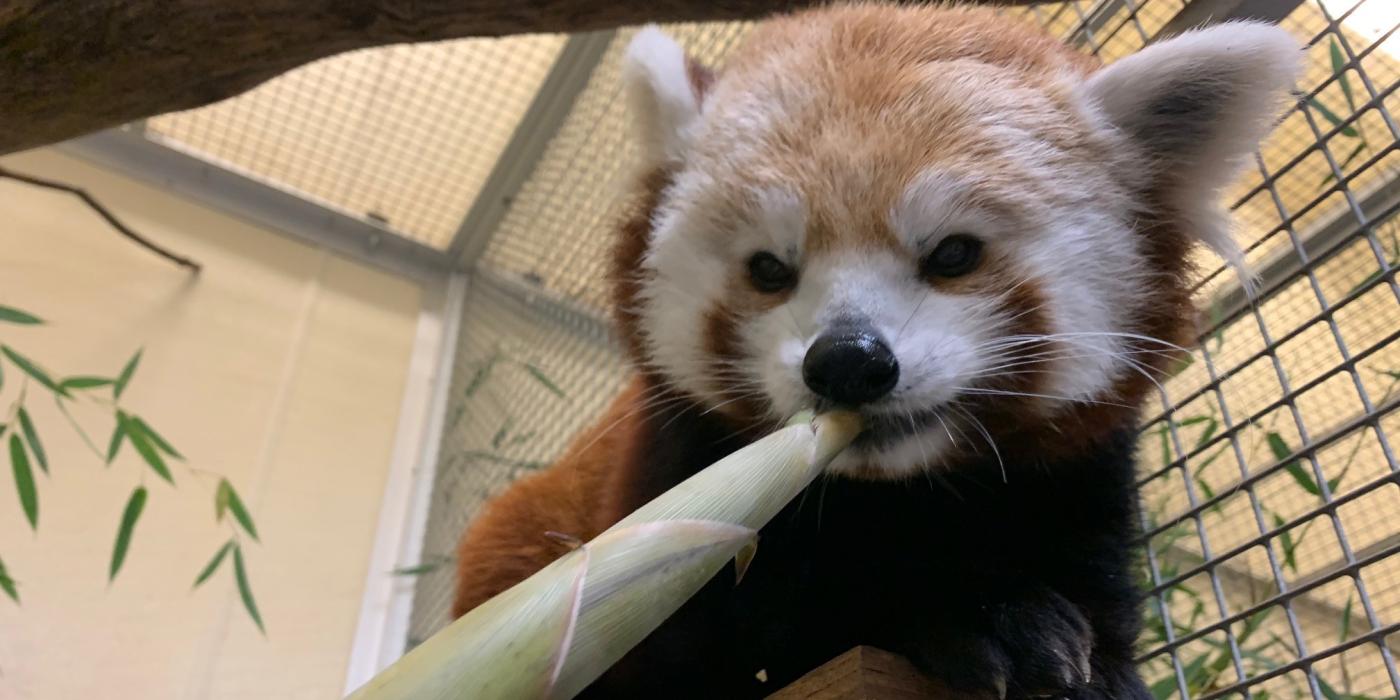How to Care for Golden Lion Tamarins
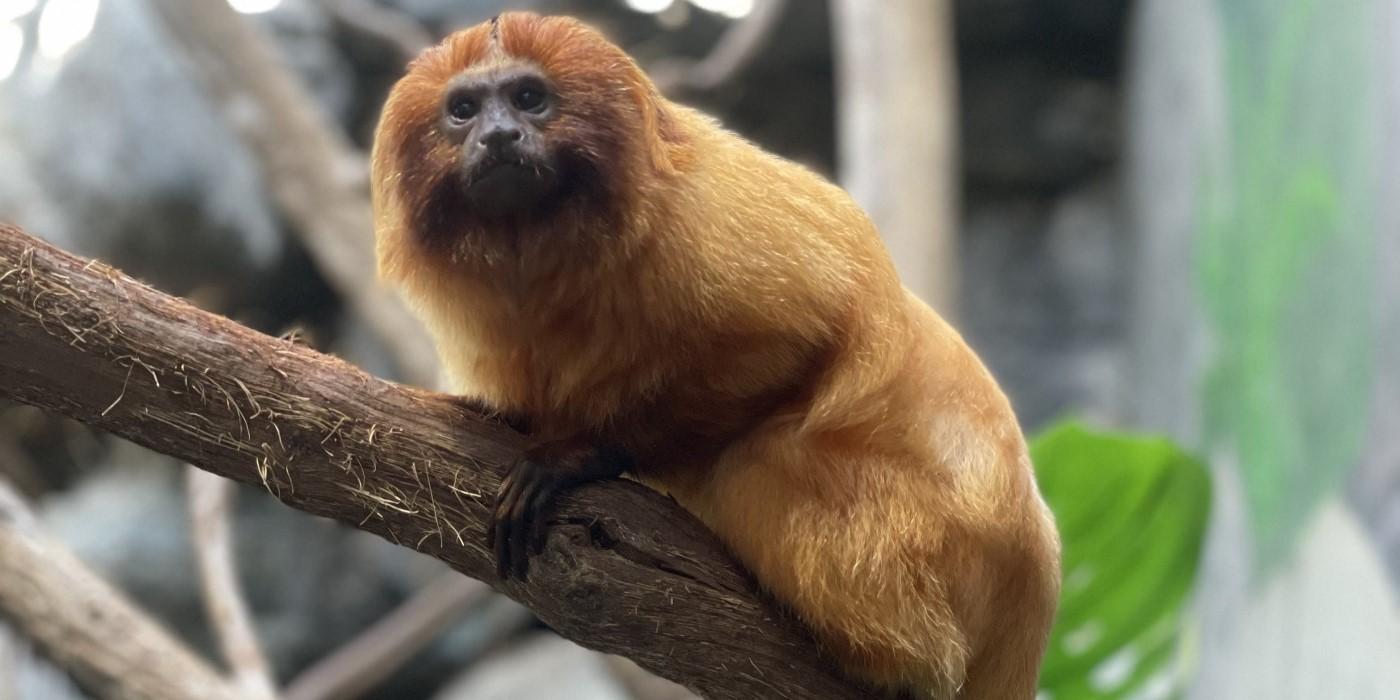
As August comes into full swing, we are greeted with Golden Lion Tamarin Day Aug. 2. The Smithsonian’s National Zoo and Conservation Biology Institute has long been a part of efforts to save this endangered species. Get to know these brightly colored primates from Kenton Kerns, curator of Small Mammal House!
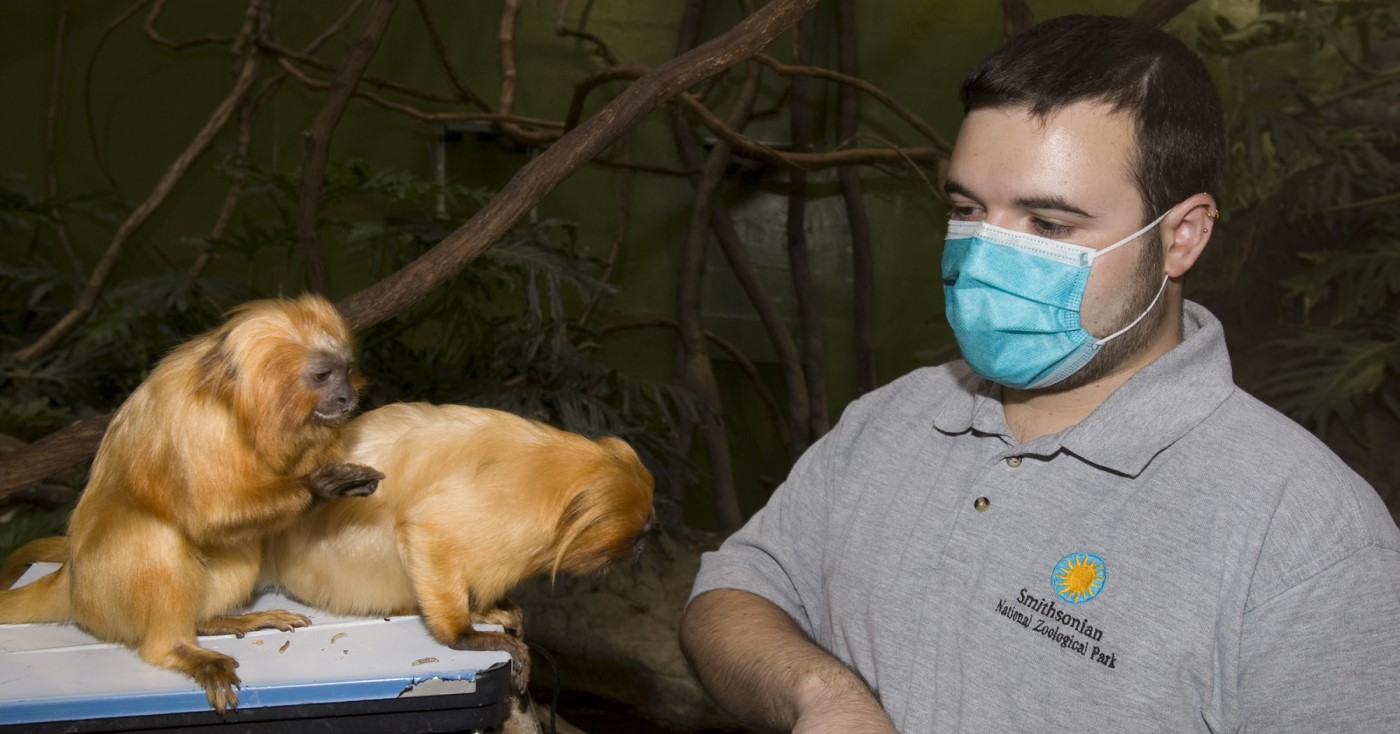
There is a huge sense of pride among everyone who works with golden lion tamarins in human care. They always keep us on our toes! They can be sweet, smart and charming, then turn temperamental, sassy, shy or hardheaded in an instant. Tamarins are quick learners and have their own distinct personalities. Getting to know them individually – from their favorite treat and spot in the exhibit to their happy vocalization – is really fulfilling.
This summer, the Zoo’s golden lion tamarin pair—male Pedro and female Gemma—can be seen behind the Small Mammal House in their outdoor habitat. Meet them in this video:
Golden lion tamarins are native to the Atlantic coastal forest of Brazil. Historically, the forest used to span the entire coast. Today, only 7% remains due to severe habitat loss and fragmentation. Imagine getting in a car in Washington, D.C., and driving two hours away. You pass through the crowded city, then the sprawling suburbs until, eventually, you see more green spaces in between towns and farms in the countryside. The small, fragmented forest about two hours from Rio De Janeiro is where these endangered primates live.
In the early 1970s, less than 200 golden lion tamarins remained in the wild. Zoos united to breed and reintroduce hundreds of tamarins back to their native habitat. Today, 72% of the golden lion tamarins living in the wild today are the descendants of zoo-born animals. 72%! What would this population look like now if scientists and zoos had not collaborated to reintroduce these tamarins? They may have already gone extinct.
The golden lion tamarins you see in zoos today serve as an insurance population—in case the wild population was to dip again—and are ambassadors for their wild counterparts. Our hope is that visitors will fall in love with their charm and cute antics, learn more about golden lion tamarins and take meaningful steps to help us conserve this species.
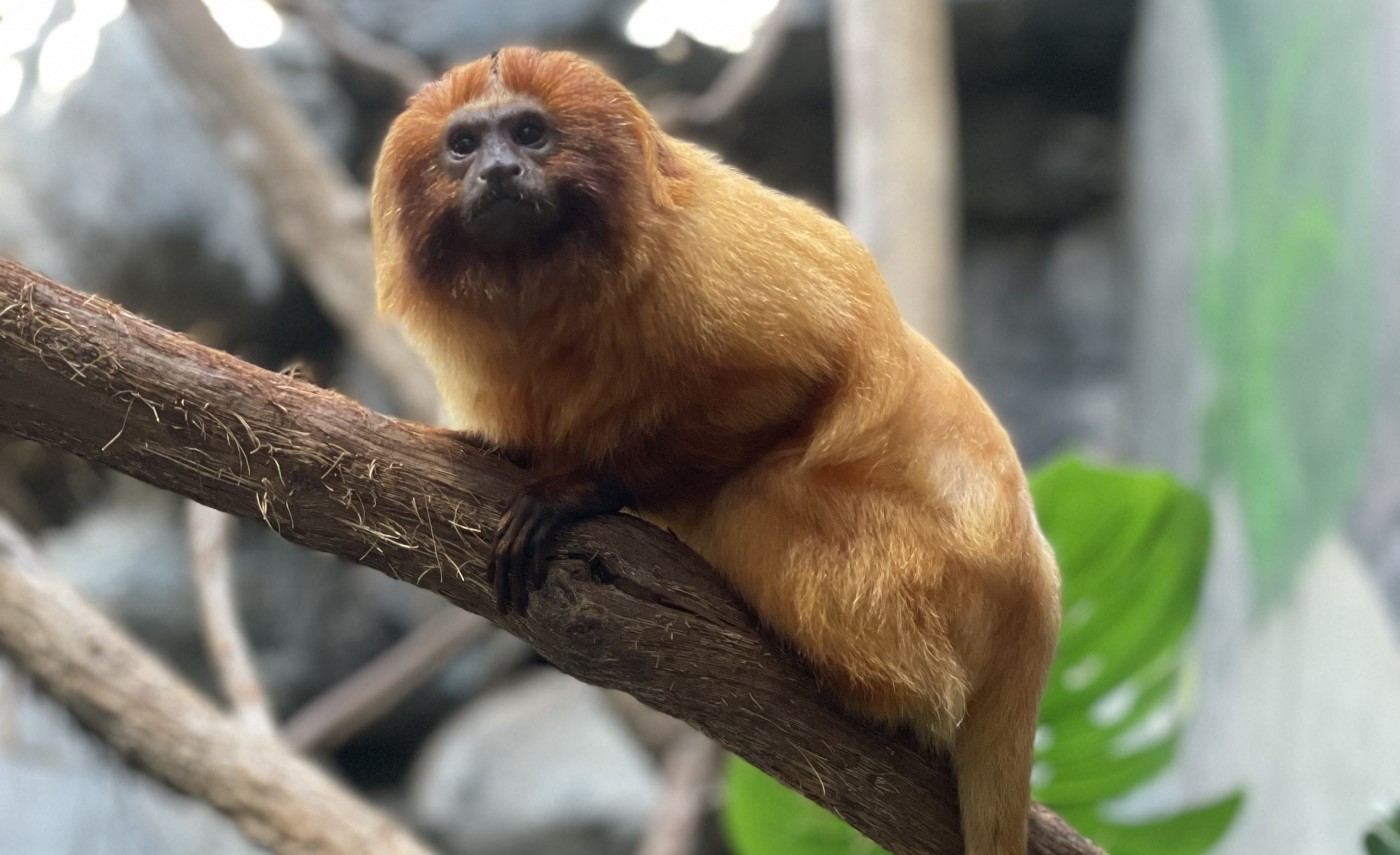
Inside the Small Mammal House, when the golden lion tamarins are not enjoying the outdoor habitat, they can be found in a large mixed-species exhibit. It mimics the tamarins’ natural habitat with lots of trees, vines and plants. Golden lion tamarins nest in tree holes that are dug out by other species, so we provide them with nest boxes made of wood to sleep in overnight.
One of the biggest shifts over the years in caring for golden lion tamarins at the Zoo has been our increased focus on enrichment and training. In the past 20 years, we’ve honed in on how important it is to keep our animals physically and mentally stimulated while in our care. Small Mammal House keepers are fantastic at evaluating a species’ natural behaviors and coming up with the perfect enrichment to get them to replicate those behaviors on exhibit by using a specific toy or device.
While the tamarins will eat bugs from a dish, it will only take them two minutes to finish and head back to sleep. But if you put those bugs in a fake log that requires them to stick their whole arm in and grasp for bugs one at a time, they’ll spend 30 minutes foraging like they would in the wild. Plants have lots of tiny nooks and crannies for bugs to crawl into. Golden lion tamarins use their long fingers to micromanipulate, excavate and consume these creatures.
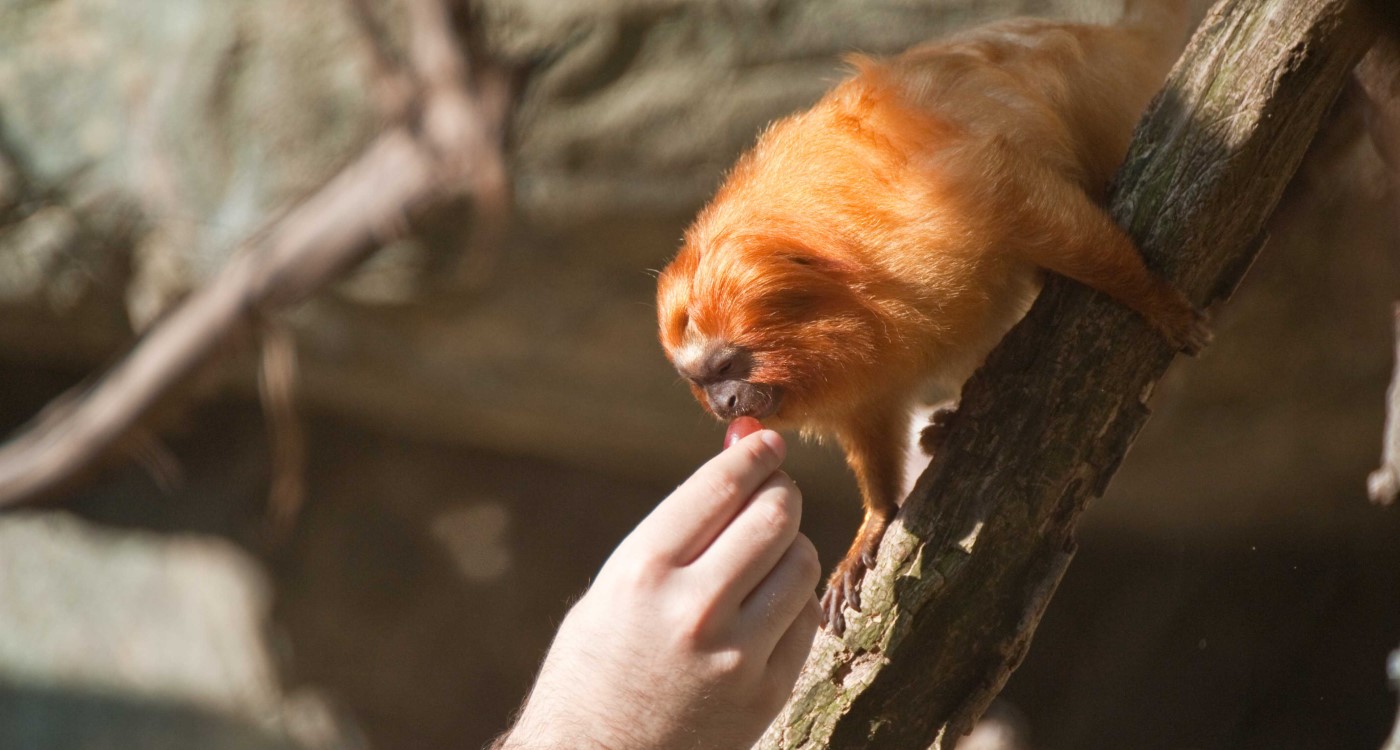
In addition to bugs, golden lion tamarins have a varied diet. In the wild, they will eat whatever they can find in the trees and fits in their mouth, from fruit, bugs and nuts to eggs and small mammals. At the Zoo, we feed them veggies, bugs, nuts, eggs and some fruit. They always seem to love bugs, but often their favorite food is whatever someone else has! They are known for stealing food from a parent or older sibling.
We also have to watch out because they’ll sometimes go after the sloths’ food too! As I mentioned earlier, our golden lion tamarins live in a mixed-species exhibit when they are indoors. The Zoo’s two-toed sloths and golden lion tamarins have been exhibit mates for years. Vlad, our male two-toed sloth, can only be described as the most tolerant sloth in the world. He’s 36 years old, and we jokingly describe him as a babysitter for multiple litters of golden lion tamarin babies. Every baby tamarin born in this exhibit has snuggled up with Vlad at some point during their youth or ridden him across the exhibit!
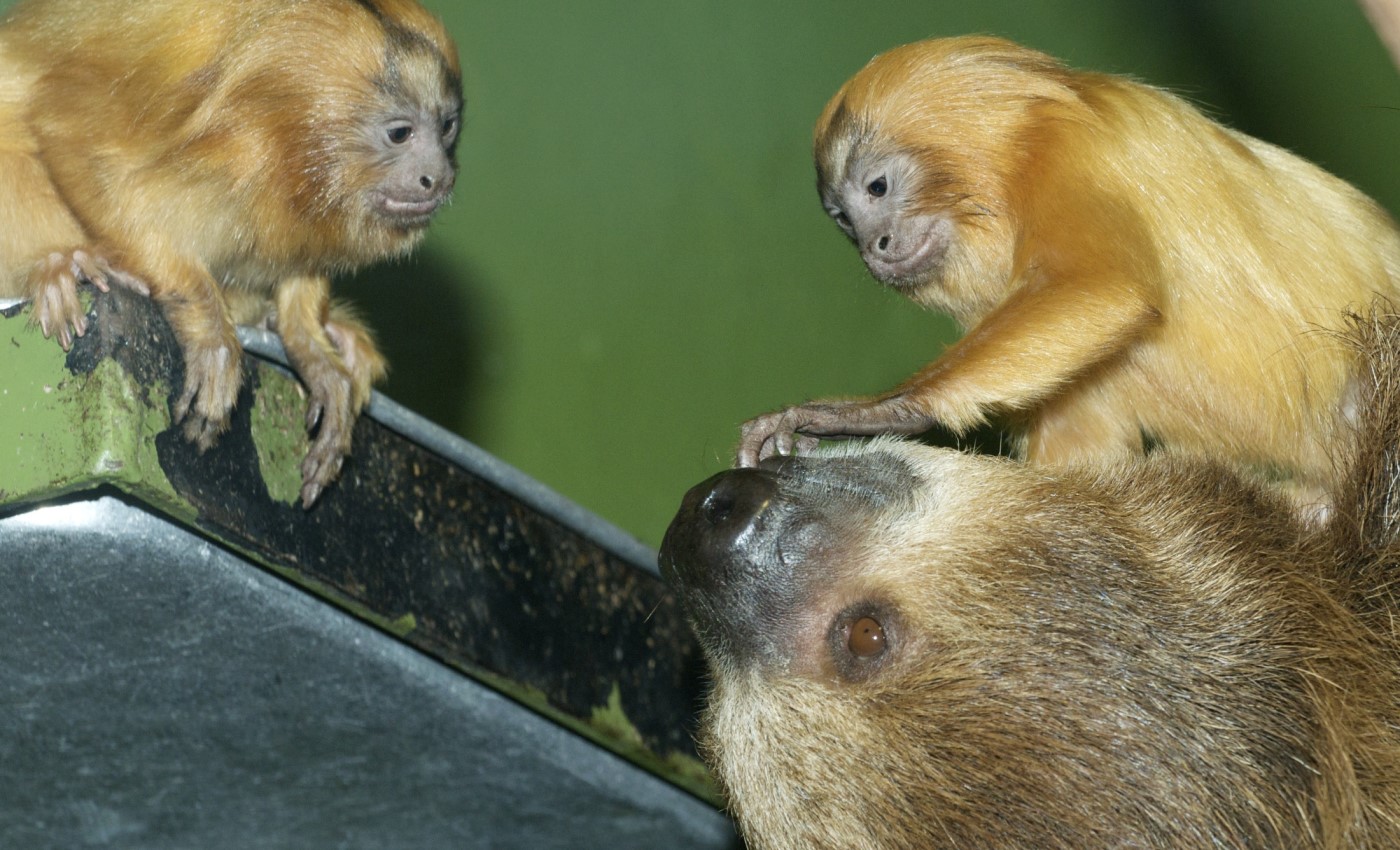
Vlad can only be described as the most tolerant sloth in the world. He has allowed many baby tamarin to ride him across the exhibit at some point. He is also tolerant of the tamarins’ curiosity with his food, both in and outside his mouth!
The most sloth-centric golden lion tamarin was probably Mara. She snuggled with Vlad and sat on his belly. A volunteer once saw Mara pry open Vlad’s mouth while he was chewing. She proceeded to scrape the sugary, frothing saliva off his tongue and taste it herself! She did this multiple times—and Vlad let her!
Although we love working with animals and it seems like we’re very close with them, it’s important to remember that these are wild animals. The pet trade is a huge threat to these tamarins and contributed to their decline in the 1900s.
Golden lion tamarins make terrible pets. Living in someone’s home could lead to severe health and mental issues in these monkeys. We always wear masks when around our primates to keep them safe from some common human illnesses that could kill them. We also set up social groups with their care in mind as they need be around other tamarins.
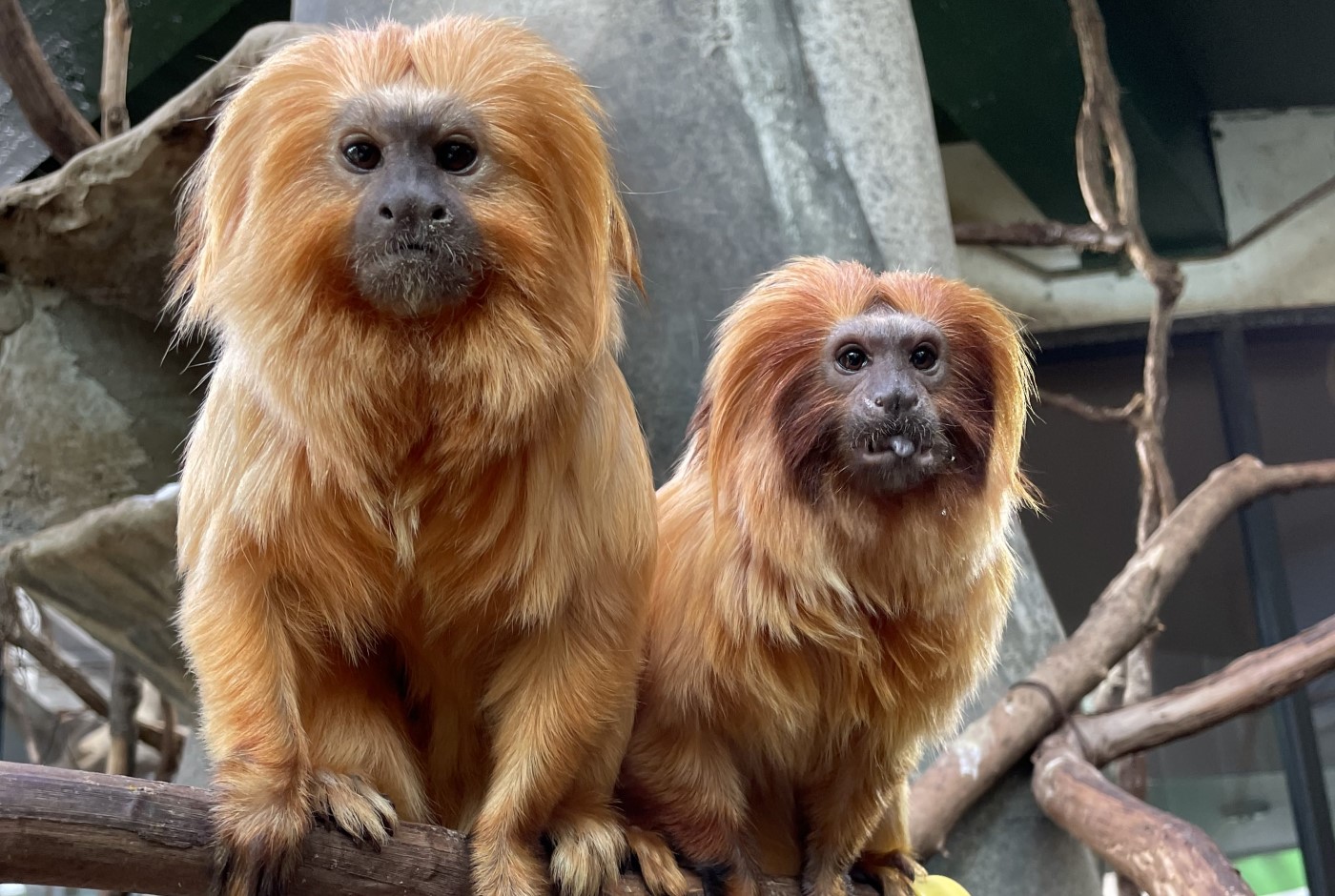
Working alongside like-minded individuals to save a species—and seeing the tangible differences that we can make when we problem-solve together—is truly gratifying. If you aspire to work with golden lion tamarins one day, keep learning! Even though I’ve spent years caring for tamarins, I’m always learning new things from our animals, from my zoo colleagues, and from scientists who study and protect these animals in the wild.
Visit Pedro and Gemma outside the Small Mammal House when you plan your visit today!
Hungry for more stories from our keepers? Check out more stories from all over Smithsonian’s National Zoo and Conservation Biology Institute here.
Related Species:

